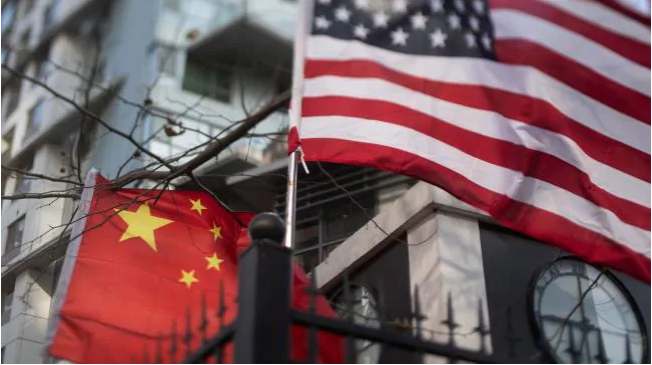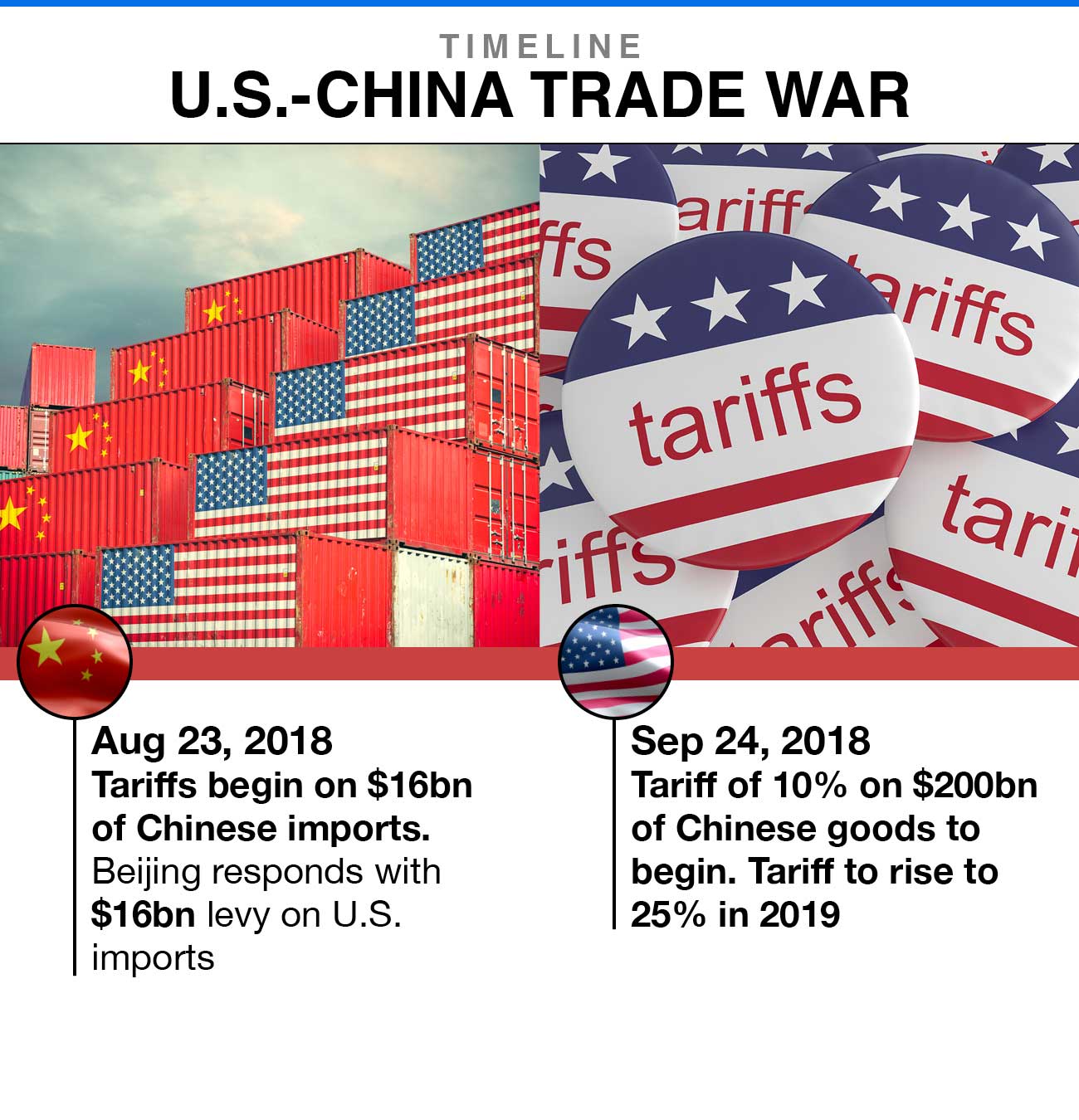
This article is more than
6 year old
An ongoing trade feud between two of the world’s most powerful countries has ramped up even further, with China announcing higher tariffs on the United States.
The Chinese government said it would impose retaliatory tariffs on $US60 billion ($AU86.4 billion) worth of American goods, causing the US stock market to fall considerably overnight.
This signifies that the trade war between these two economic powerhouses is real.
And it’s getting ugly, with US President Donald Trump threatening a further (AUD) $467 billion in tariffs on Chinese products.
The ASX was rocked by the latest escalation, with shares plummeting at the opening.
The market was down 1.4% on early trading, just hours after Beijing announced the tariff increase on US goods.
The S&P/ASX 200 Index dropped 72.3 points in just 15 minutes.
The losses were worst in the financial sector.
European stock markets were also hit by the new tariffs, with the pan-European STOXX 600 index dropping 1.2%
Global market strategist Kerry Craig said the dispute could hurt global growth.
“The recent tit-for-tat increased tariffs has increased the risk of eroding the market gains enjoyed this year,” the J.P. Morgan Asset Management strategist told the Australian Financial Review.
“Furthermore, as there isn’t a clear schedule for meetings between Chinese and US negotiators, markets are likely to be more volatile, especially in the absence of any substantive information not written in a tweet.”

WHAT’S UP WITH CHINA AND THE US?
China and the US have continued to fuel their trade war by imposing another round of tariffs on one another.
Real quick — a tariff is essentially a fee attached to an imported good. It is typically charged as a percentage of the transaction price that a buyer pays a foreign seller.
Tariffs are used to protect domestic industries from foreign competition, but can also punish foreign countries for dumping their goods at unfairly low prices. The latter was the rationale behind Mr Trump imposing additional tariffs on steel and aluminium imports from China last year.








The US justified this decision by accusing China of backtracking on commitments made in earlier negotiations.
The Trump administration is hoping that fewer Americans will buy China’s products in favour of domestic goods, which would see foreign companies leave that market and head elsewhere.
“Many tariffed companies will be leaving China for Vietnam and other such countries in Asia. That’s why China wants to make a deal so badly!” Mr Trump tweeted yesterday.

China has now responded by raising tariffs on $60 billion worth of American goods, with tariffs increased from 5 to 25 per cent taking effect on June 1 this year, on over 5000 American products, including batteries, spinach and coffee.
You only need to look to the latest stock market figures to see its impact. Stocks have sunk across the globe.
The Dow Jones industrial average was down more than 600 points by midafternoon, while the Standard & Poor’s 500 also sank nearly 2.5 per cent.

Earlier, stocks fell in Europe and Asia.
The higher Chinese tariffs will kick in in two weeks. The US increases apply to Chinese goods shipped since Friday, which will take about three weeks to arrive at US seaports and become subject to the higher charges.
On Twitter, Mr Trump warned Chinese President Xi Jinping that China “will be hurt very badly” if it doesn’t agree to a trade deal.
Read More (...)